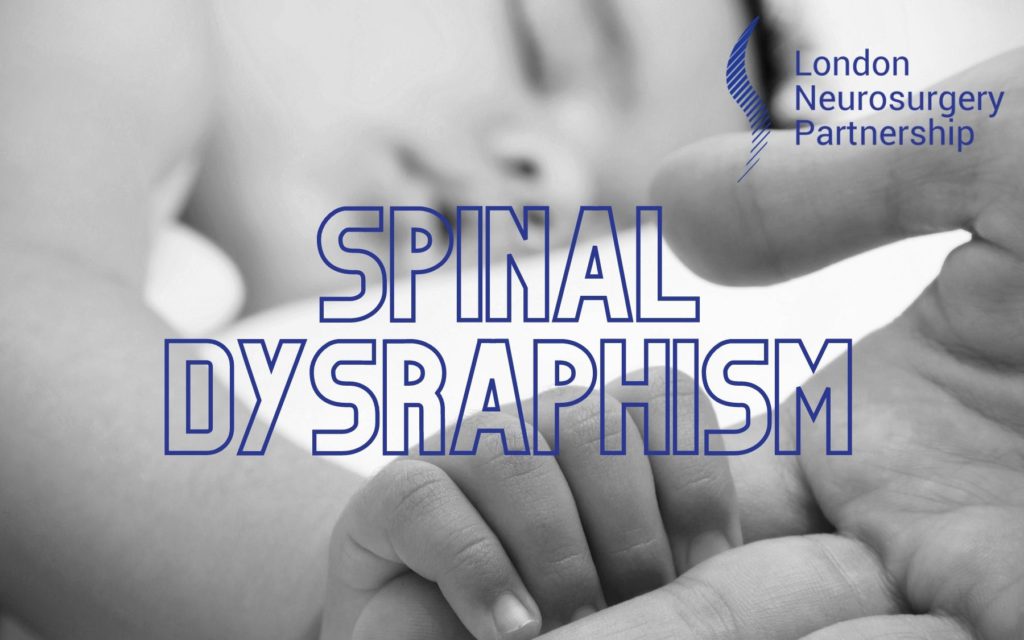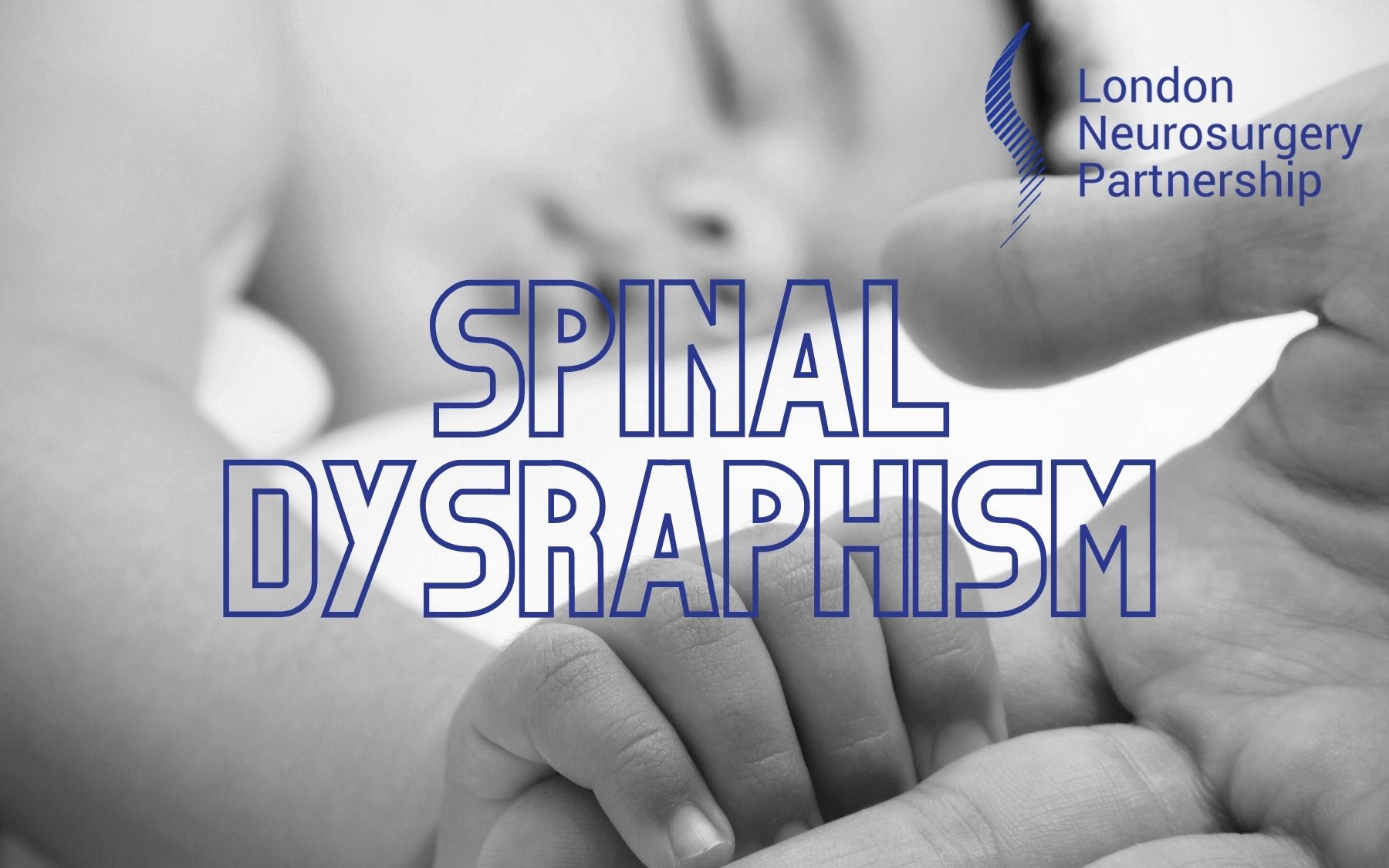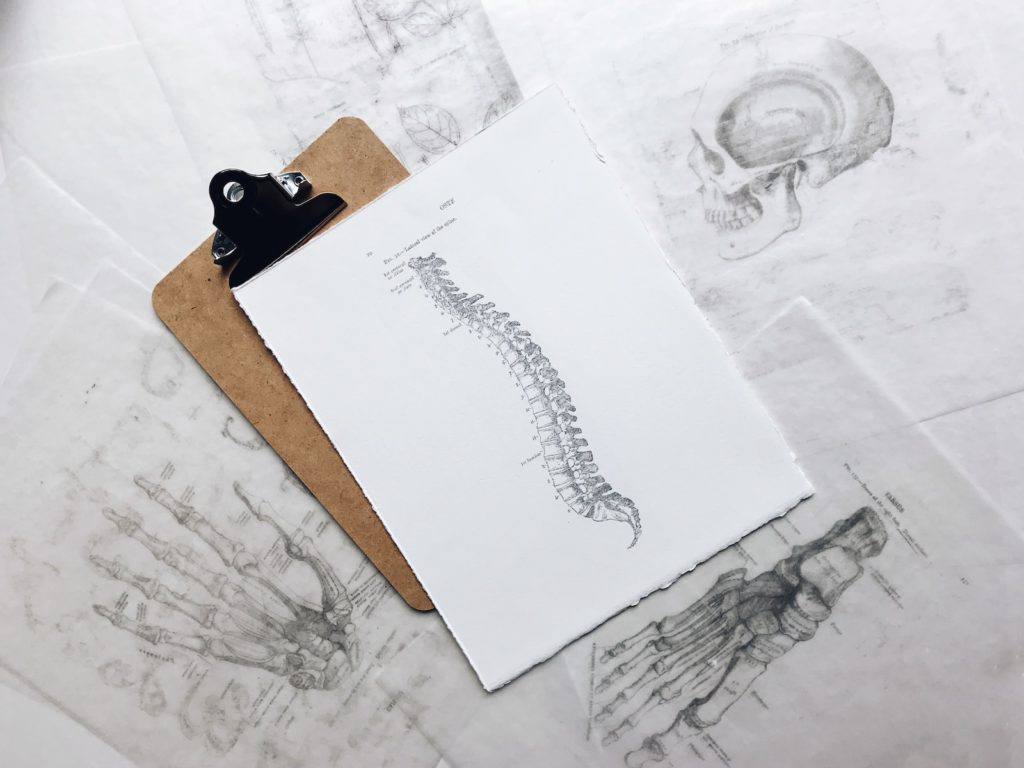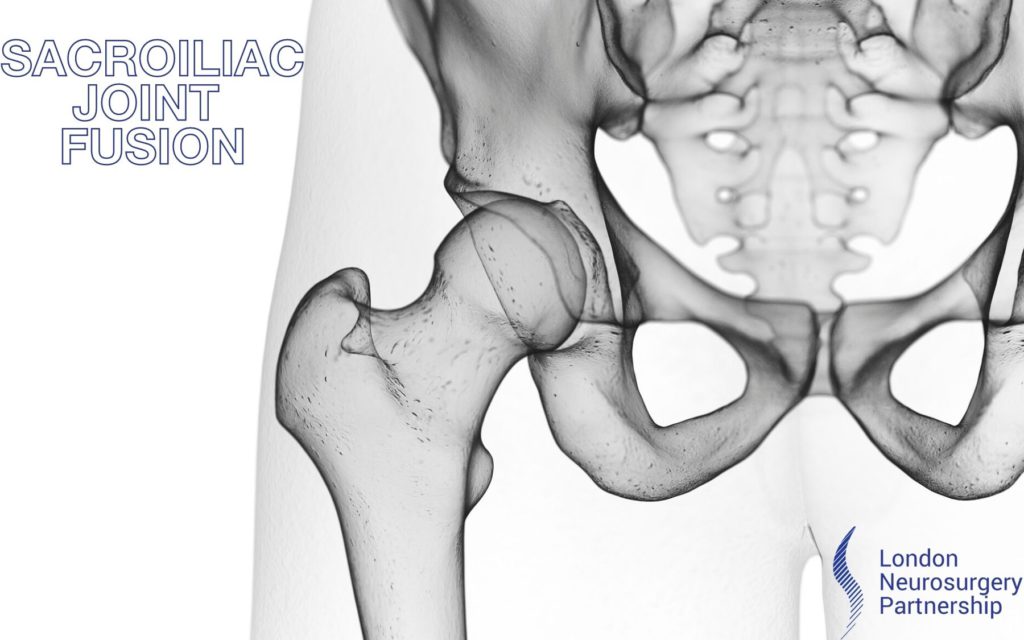
Spinal Dysraphism is an umbrella term that is used to describe a number of different conditions that affects the spine, spinal cord and nerve root when a baby is developing in the womb (birth defect).
Here are some of the conditions that fall under spinal dysraphism:
- Myelomeningocele or open spina bifida – the spinal cord is not contained within the spinal column and protrudes outside the body in a sac.
- Symptoms include bladder and bowel incontinence, sensory loss, mobility problems, hydrocephalus
- Spina bifida occulta – this does not affect the spinal cord, one or more of the vertebrae has a defect
- It is rare for patients with this condition to experience symptoms
- Diastematomyelia or split cord malformation – this is a very complex condition caused by the spinal cord splitting into two different cords usually caused by a piece of bone or cartilage
- Symptoms include scoliosis and tethered cord
- Lipomyelomingocele – an abnormal growth of fat that attaches to the spinal cord and surrounding area
- This condition does not always cause symptoms straight away; however, it can lead to problems with the bladder and bowel, Frequent UTI, leg and back pain
- Dermal sinus tract – this is a channel of skin that reaches the spinal cord; this condition can be associated with tumours around the spinal cord
- Symptoms associated with this condition are often linked to a tethered cord, it can also increase risk of infections
- Benign tumours or cysts – these are noncancerous tumours but can cause additional pressure on the spinal cord
- Symptoms associated with this condition will often be related to compression of the spinal cord, this can cause weakness, clumsiness and possibly incontinence
- Tethered cord – this condition occurs when the spinal cord cannot move freely and therefore
- Symptoms can include back and leg pain and bowel and bladder incontinence
The symptoms associated with spinal dysraphism can vary between patients as the cause and severity is different for every patient. The symptoms listed above are some of the most common, however the condition can present in other ways.
Causes and diagnosis
The exact cause of spinal dysraphism is unknown however it is thought to be linked to some genetic and environmental factors. The spinal cord develops in the very early stages of foetal development, which is when many forms of spinal dysraphism occurs. It is thought that issues with folic acid can lead or increase the risk of these conditions occurring.
Depending on the severity of the condition, it can be detected at different points. Myelomeningocele or open spina bifida can often be diagnosed before the baby is born or immediately after birth. Whereas other conditions such as benign tumours or spina bifida occulta may go undiagnosed for a while before any symptoms are picked up.
Treatment
Just like the diagnosis and symptoms, the treatment options can differ for every patient that has spinal dysraphism. Here are some of the most common treatments that are used to treat each condition:
- Myelomeningocele or open spina bifida – this is treated in the first couple of days of life to prevent any future damage. The spinal cord is placed back inside the spinal column
- Spina bifida occulta – this is left untreated if no symptoms are reported
- Diastematomyelia or split cord malformation – the most common treatment that is used for this condition is called decompression surgery. The problematic piece of bone or cartilage is removed, allowing the spinal cord to sit properly
- Lipomyelomeningocele – the fat mass is surgically removed; this may not be all the mass as it may not be safe to do so
- Dermal sinus tract – surgery is done to remove the tract (abnormality) and therefore stop any further neurological damage
- Benign tumours and cysts – these can be removed using minimally invasive surgical techniques in some cases
- Tethered cord – the surgery that is used to treat this condition is usually differs for every patient depending on the location and cause of the tether. The site of the tether will usually be exposed and then the cause of the tether removed or corrected
If you would like to speak to a member of our team about treatment or diagnosis for any of conditions related to spinal dysraphism please contact us.
This article is intended to inform and give insight but not treat, diagnose or replace the advice of a doctor. Always seek medical advice with any questions regarding a medical condition.






0 Comments